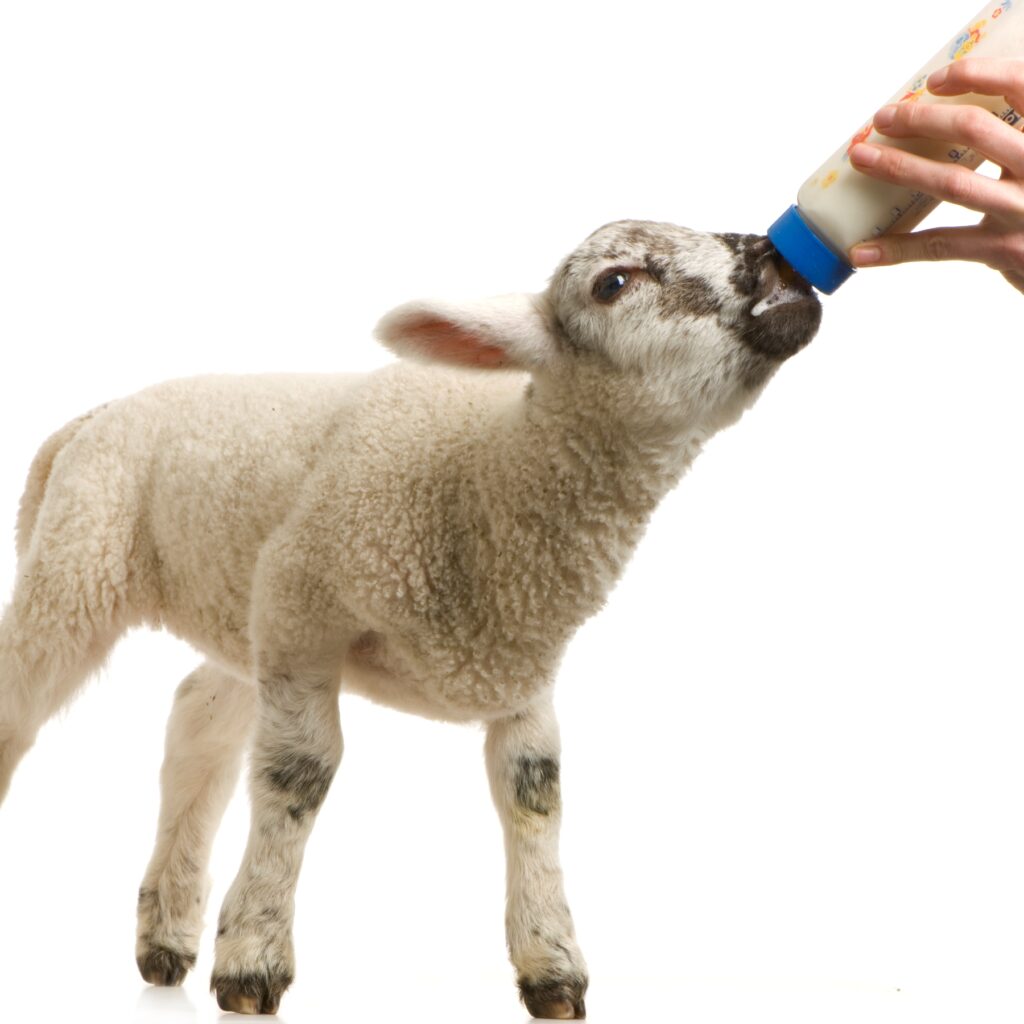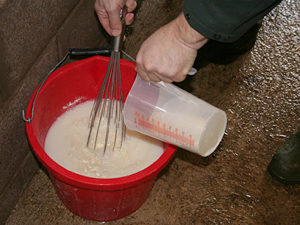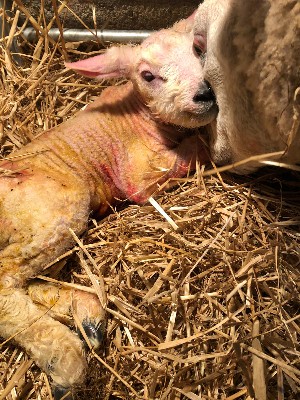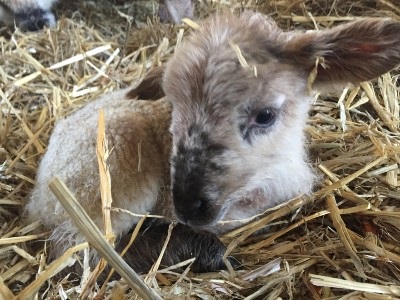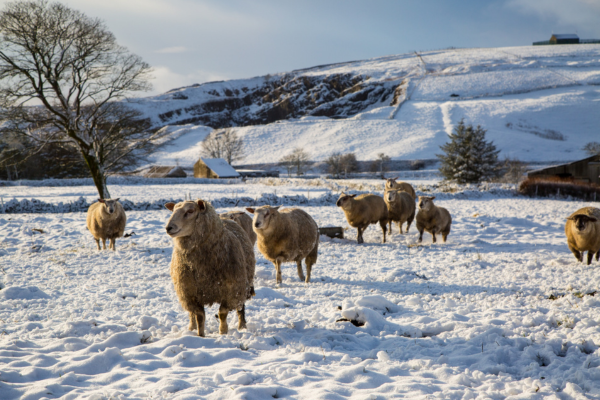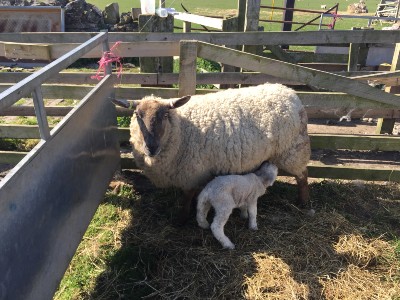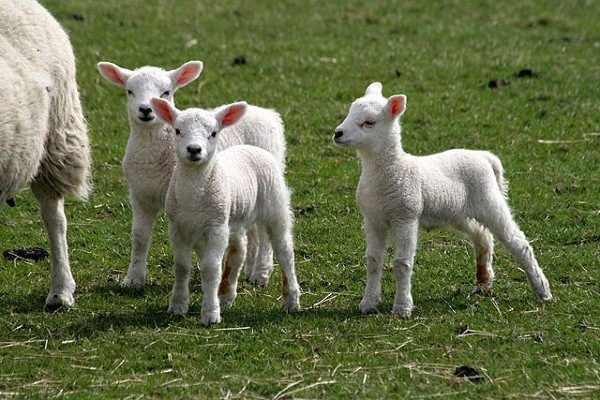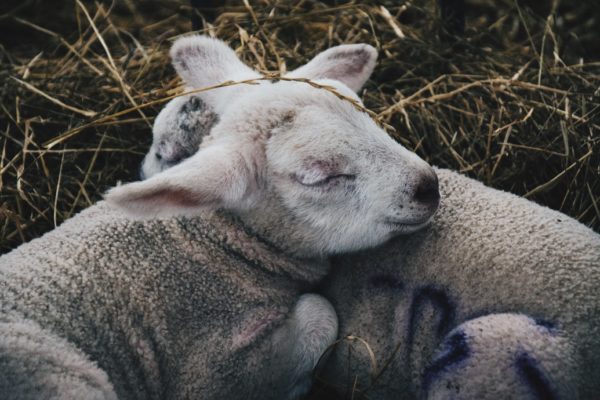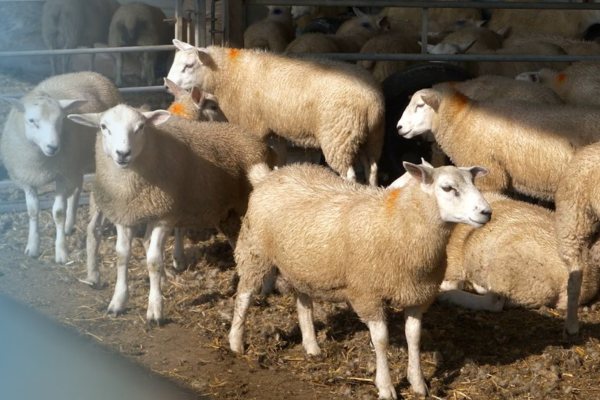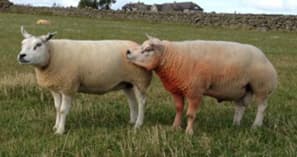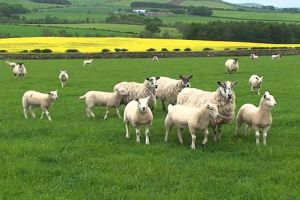Ewe Milk Replacer Factsheet
30 September 2025Surplus lambs are an inevitable part of lambing time and there are several reasons why lambs need to be artificially reared. Once the decision has been made that a lamb needs to be artificially reared, it is important it has the best possible start, whether it is to be sold or reared on the farm.
Lambs require good nutrition in the right environment for survival and good growth and getting the system right for your farm will ensure that surplus lambs are healthy and profitable.
Once lambs have had sufficient colostrum they can move on to ewe milk replacer. This factsheet talks you through the following:
- Systems for feeding milk to surplus lambs
- Types of milk replacer
- Milk replacer management
- Weaning lambs off milk replacer
- Accompanying creep feeding
A quick note on colostrum
For good colostrum intake, lambs' requirements are 50ml/kg body weight within the first 6 hours of life and a total of 200ml/kg body weight in the first 24 hours.
There are some excellent resources on colostrum feeding of lambs including,
Systems for feeding milk to surplus lambs
There are three main options for artificially rearing surplus lambs:
- Bottle Feeding
- Ad Lib Feeding
- Automatic Feeding
Choosing which system to use will depend on the number of lambs to be reared and labour/time available. Regardless of which option you choose, for all options hygiene is extremely important, as is the quality of the milk being offered.
Bottle feeding

For very young lambs and smaller numbers. Bottle feeding is time consuming, with lambs requiring feeding several times a day. For the first 7 days, 1 litre/day should be split into 4 feeds. From day 7 to weaning – feed 1.5 litres/day split into four feeds, reducing this to two feeds by weaning. More feeds per day means less chance of bloating and digestive upsets – feed little and often.
Ad-lib feeding
Lambs share a milk bucket with teats attached to it. The milk is hand mixed and fed warm or cold (when lambs are older) and some systems keep the milk at a constant temperature. Lambs need training on to the teats and care should be taken to introduce them to the feeders when they are not too hungry, so they do not gorge.
Automatic milk machine
Ad lib feeding, where a machine mixes and delivers milk at a consistent temperature through a teat. Lambs help themselves little and often. This method is more costly in terms of set up and volume of milk consumed, however it is labour saving for larger numbers of lambs. Lambs are trained to the teats over the first few days.
For ad lib feeding systems teat placement should be 30-38cm from the ground, with up to 8 lambs per teat, depending on the ad lib system and milk supply. Lambs should be in groups of similar size and age. They need to be strong and healthy to go on to an ad lib system.
Signs of overfeeding
With machine rearing or ad lib feeding from a bucket with a tube and teat system, intakes cannot be monitored, so looking at lamb behaviour and how full they are regularly is important. Lambs drinking too much milk will have distended tummies and appear lethargic or uncomfortable. Lambs drinking too little will be hollow, lethargic and uninterested in life. Healthy lambs will be energetic, bright and moving inquisitively and freely round their pen.
Types of ewe milk replacers
There are two types of ewe milk replacers:
- skim milk-based
- whey-based
Skim milk replacers are considered the gold standard as they are closest to ewe’s milk in composition. Skim-based replacers are easily digested, as like ewes’ milk they contain casein which forms a “curd” in the abomasum for a slower digestion. With whey-based powders there is less (or no) casein and no “curd” formed so digestion is more rapid. Most ewe milk replacers are whey-based. A high level of milk protein is desirable compared to plant protein sources. There are “instant” and “freeflow” powders available, with “freeflow” being more suitable for automatic machine feeding as it has been processed in a way that its fine particle size allows the powder to flow freely and is less prone to clogging up a machine. Nutritionally, the freeflow and instant versions of a milk replacer product are the same.
What to look for on a ewe milk replacer label
Most ewe milk replacers are similar in composition, look for a minimum of 23% crude protein, with skim or whey powder as the main ingredient and a crude fibre of below 0.05%. Anything above this indicates that the milk may contain less digestible plant proteins. This is still acceptable, but generally plant proteins are not as easily digested compared to milk proteins (whey and skim).
Milk Replacer Management
Mixing ewe milk replacer
Following the manufacturer’s mixing guidelines on the bag is vitally important to deliver the correct nutrition from the milk replacer. The rate of inclusion of the powder is always a stated amount of powder to make up to a stated volume of complete milk, so always add in the powder BEFORE the water otherwise the milk will be too dilute. This is a very common mistake! For example, if the bag says 200g of milk replacer powder to make up 1 litre of milk, that is not 200g of powder added to 1 litre of water. Instead, mix the powder in with around one third of the water to a paste then top up with water to make the whole mixture up to 1 litre.
Milk temperature
Milk should be fed at around 39°C and water temperature should not exceed 45°C when mixed with the milk powder, as this will denature the protein in the milk which will affect how it is digested. As a rule of thumb when you pour the milk on the back of your hand it should not feel hot. If you feel it hot, then it is too hot for the lambs. Milk replacer can be fed cold to lambs over three weeks of age, however a transition period from warm milk to cold milk needs to be in place so that lambs adjust to the system without a check in intakes and hence weight gain.
Milk mixing hygiene
As artificially reared lambs are often more vulnerable to disease, it is essential that feeding equipment is kept clean and hygienic to prevent multiplication of bacteria and prevent disease such as E coli. Wash all jugs, whisks, bottles and teats with warm, soapy water using a bottle brush to get residual milk off after each use. Once a day soak all the equipment in a safe disinfectant solution. For automatic milk machines and bucket and tube systems, pipes should be washed daily, first with a cool/warm wash to rinse away the milk fat, followed by a hot wash and suitable disinfectant. The bedding needs replacing more often around the milk machine or feeders as the area where lambs are drinking can get wet and more soiled.
Key points
- Accurate inclusion rate of milk powder to water
- Ensure the water is the correct temperature
- Hygiene of equipment is essential

Weaning lambs off milk replacer
Lambs can be weaned abruptly (milk taken away with no gradual withdrawal) or gradually over a few days.
Abrupt weaning is successful when lambs are over 35 days of age (or 2.5 times their birth weight) and they have been eating at least 250g of creep feed per day for the last 10 days. Always supply fresh, clean water and clean, long forage such as hay or straw. It is often asked whether artificially reared lambs should be turned out to grass or not. The transition of being reared inside to outside needs to be carefully managed and often lambs do better staying inside on an ad lib concentrate feeding system (see creep feeding below).
If you consider turning artificially reared lambs out to grass it should be onto high quality, clean grazing to allow good growth rates to continue. Lambs at grass will need to be monitored closely for signs of worms and coccidiosis. Where grazing is of very high quality, the provision of creep feed may be able to be reduced over a few weeks post-turnout once the group have transitioned to grass. If operating a rotational grazing system allowing this group to be the leaders will provide them with the best quality, cleanest grazing. Keeping them housed reduces the risk of losses due to adverse weather or predation and may achieve better growth rates if good quality, clean grazing is not available. However, this has higher associated feed and labour costs.
Creep feeding
To keep lambs growing, without using too much expensive milk replacer, feeding a creep feed alongside milk replacer is essential. This can be offered from 10 days old, and it is important feed is kept fresh and offered with fresh, clean water. At this stage specialist proprietary lamb creep pellets are advised. These contain good sources of energy and protein as well as the essential minerals, trace elements and vitamins for lambs to thrive. Once lambs are one month old, they can be transitioned on to good quality lamb finishing pellets or home-mixes.
Top tips
- Good hygiene of the lambs’ environment to minimise disease is essential. Warm, dry and free from draughts.
- Ensure good hygiene of feeding equipment to avoid bad bacteria multiplying and increasing disease risk.
- Feed a high-quality milk replacer powder at the right quantity and at the correct mixing rate.
- Always provide high quality creep feed, fresh water and roughage (good clean straw is best).
- Artificially reared lambs are more susceptible to disease, speak to your vet for health planning advice of this group.
Karen Stewart, SAC Consulting
Sign up to the FAS newsletter
Receive updates on news, events and publications from Scotland’s Farm Advisory Service

